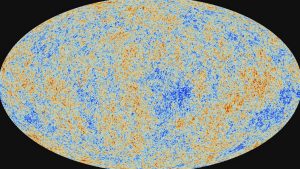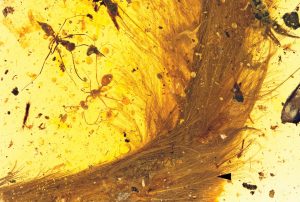
Famed physicist Stephen Hawking passed away on the 14th of March at the age of 76 after more than 50 years of suffering from the dehabilitating effects of the motor neural disease ALS. Professor Hawking’s ashes are to be interred in Westminster Cathedral not far from the remains of Sir Isaac Newton.
I do not intend to attempt a biography of Professor Hawking or a review of his work. See links below for a few websites that do a better job than I ever could. Instead I’ll just try to describe a bit of Stephen Hawking’s last paper, which I downloaded from the web a couple of days ago.
http://www.hawking.org.uk/about-stephen.html
http://www.bbc.com/news/science-environment-43499024
The paper is called ‘A Smooth Exit from External Inflation” and Hawking co-wrote the paper with Thomas Hertog of the Institute for Theoretical Physics at the University of Leuven in Leuven Belgium. To even understand the title I’m going to have to talk a little bit about the history of the ‘Big Bang Theory’ going back to 1965 and the discovery of the Cosmic Microwave Background (CMB).
Prior to 1965 the observations by Carl Hubble that the Universe was expanding led several physicists to suggest that in the distant past the entire Universe had exploded outward from an incredibly dense initial condition, and I do mean incredibly dense. One physicist named George Gamow then calculated that the leftover heat of that initial Big Bang should still be observable as a uniform background of microwave radiation. This CMB was discovered in 1965 by Penzias and Wilson at Bell Labs in Holmdel New Jersey. Penzias and Wilson were a pair of radio engineers who were actually trying to measure the amount of interference that cosmic radio sources would cause the new communications satellites and instead discovered the birth cries of our Universe. The image below shows the CMB as observed by the Planck satellite.

With the discovery of the CMB physicists began to take a really detailed look at what the conditions in the early Universe, just a tiny fraction of a second after the Big bang, must have been like. It was quickly realized that most of the possible initial conditions would lead to a Universe vastly different than the one we see.
Half of all of these possible Universes would be so dense that gravity would make them immediately collapse back upon themselves, these were Universes that never really get started. The other half of the possible Universes would be just the opposite, they would fly apart so fast that no structure could form, a great big empty Universe. Our Universe, that has survived for billions of years but has billions of galaxies, existed on a knife’s edge between the two. Physicists regarded that as too precise to occur naturally and wanted to find some reason for such fine tuning.
It was a physicist named Alan Guth who would in the 1970s would provide a solution to the problem, although it’s a solution that has caused many problems of its own. Guth proposed that a tiny fraction of a second after the big bang (10-30 seconds or thereabout) the Universe underwent a period of inflation, it expanded at many times the speed of light smoothing itself out and leaving virtually all possible Universes looking just like ours.

Before long observations from satellites studying the CMB confirmed many of the predictions of Guth’s inflationary model and today nearly every cosmologist accepts the need for some sort of inflation in the early Universe.
Now at first Guth did not proposed a mechanism of what caused his inflation, he would later work on several alternatives, he simply pointed out that inflation whatever caused it would generate a Universe like the one we see. Back when I was taking Cosmology the energy needed to cause inflation was assumed to come from the symmetry breakdown of a Unified Force Field into the four Forces we’re familiar with, Gravity, Electro-Magnetism and the Strong and Weak Nuclear Forces.
Today however Unified Field Theories are having a hard time of it and it has been suggested, based on clues from quantum field theory, that inflating space might be the norm and a Universe like ours is really nothing but a bubble in sitting inside an ever inflating reality. In that case there are undoubtedly infinitely many other bubbles making a Multiverse of infinite Universes.

Is your brain hurting yet, because I’m just getting to Hawking’s last paper. What Hawking and his former student have done is to develop a mathematical model of an inflating Universe where inflation comes to a soft end, a smooth exit as Hawking and Hertog put it. This generates a single Universe not an infinite number of Universes in a Multiverse.
Now all of this is just a mathematical model, the only observable prediction that the paper makes is that there should have been gravity waves produced during the inflation period, an observation that may soon be tested. However many other theories of the early Universe make the same prediction so the discovery of such gravity waves will only be weak support for Hawking’s model.
Progress in cosmology is slow but I have seen quite a bit in my time, I can barely remember when the Big Bang was still just a hypothesis. I do hope that in the next few years we get a better understanding of what triggered inflation as well as what brought it to a halt. If and when we do I’m certain that the answer will be something that Stephen Hawking would have found fascinating!


